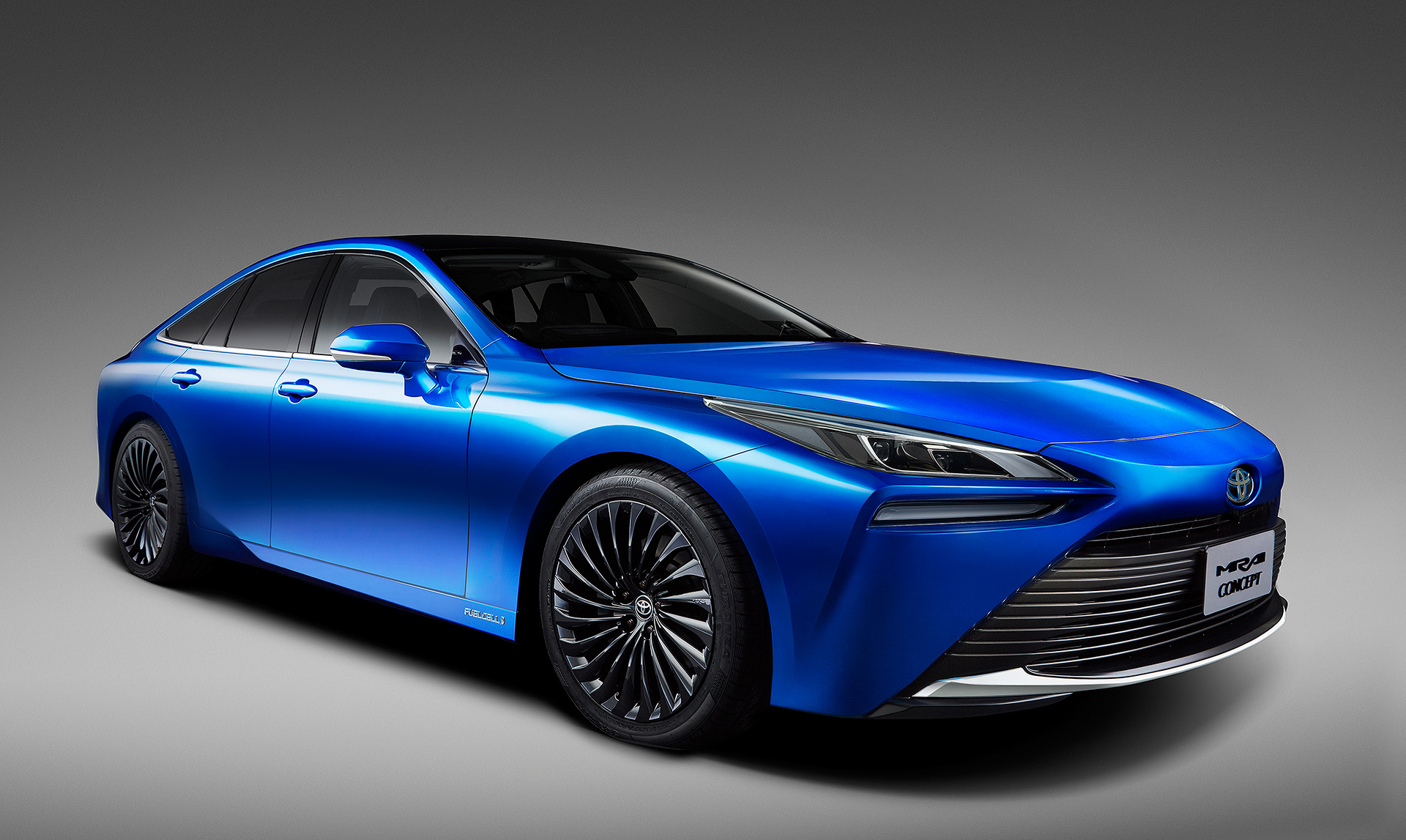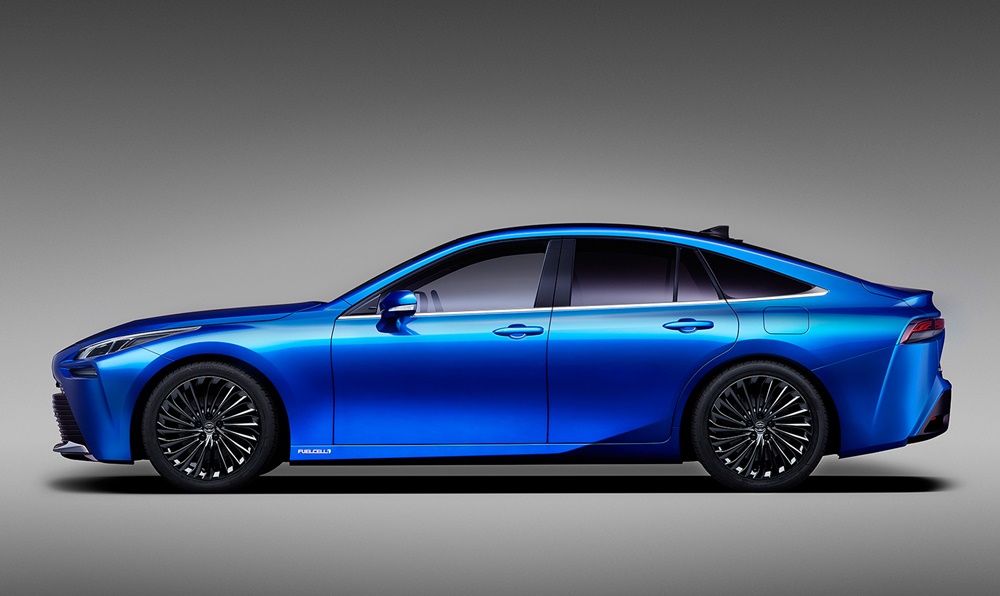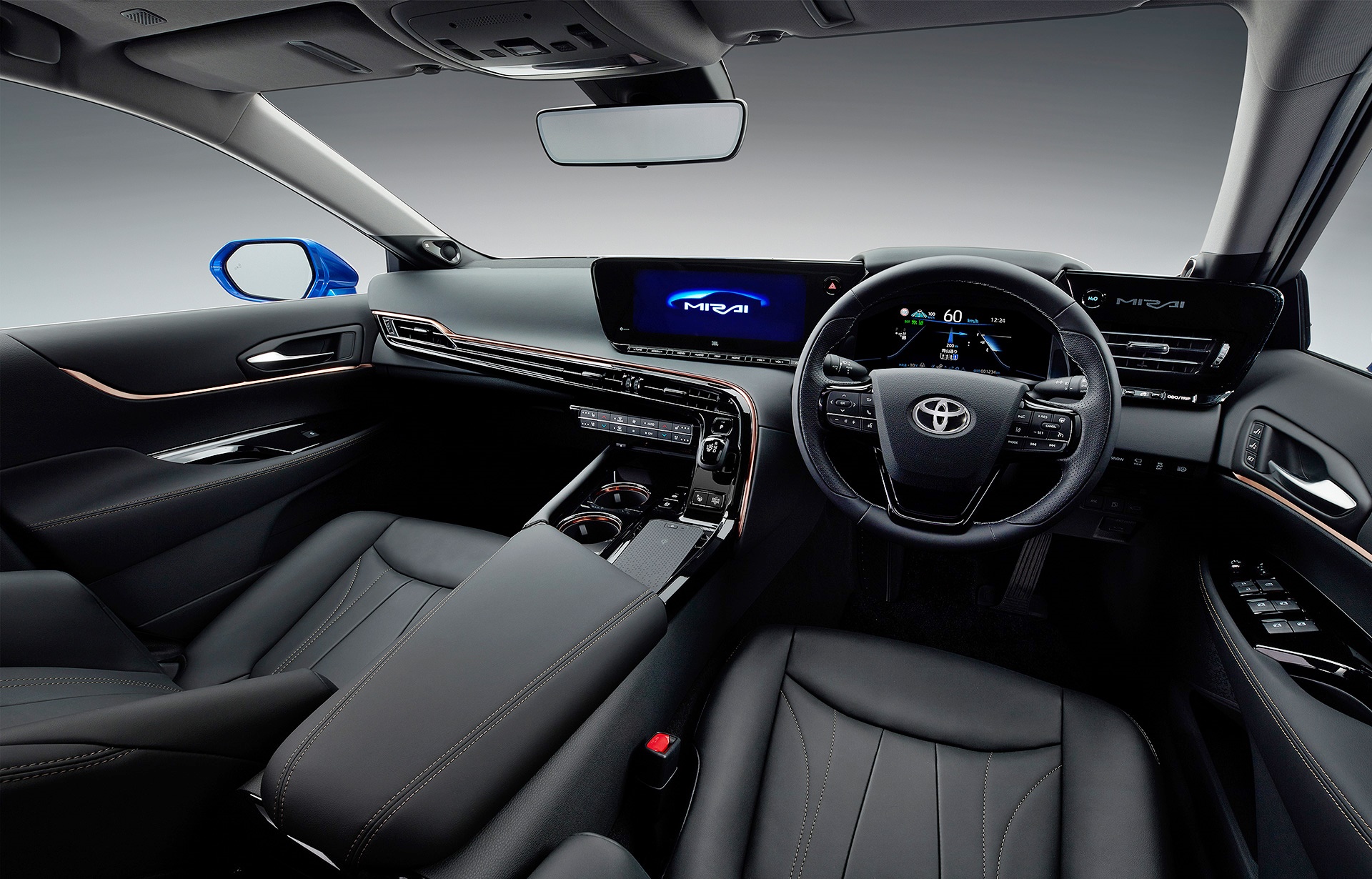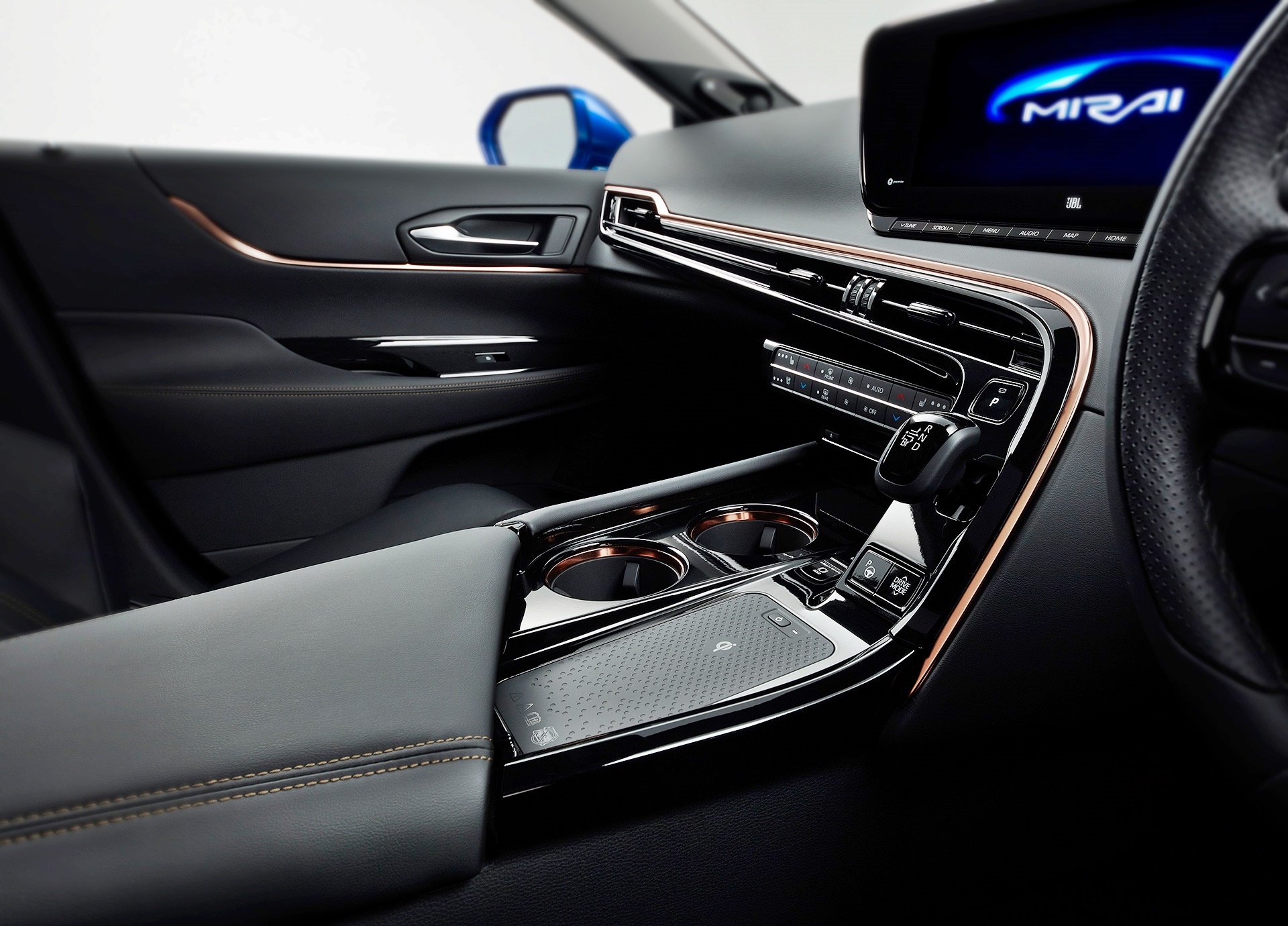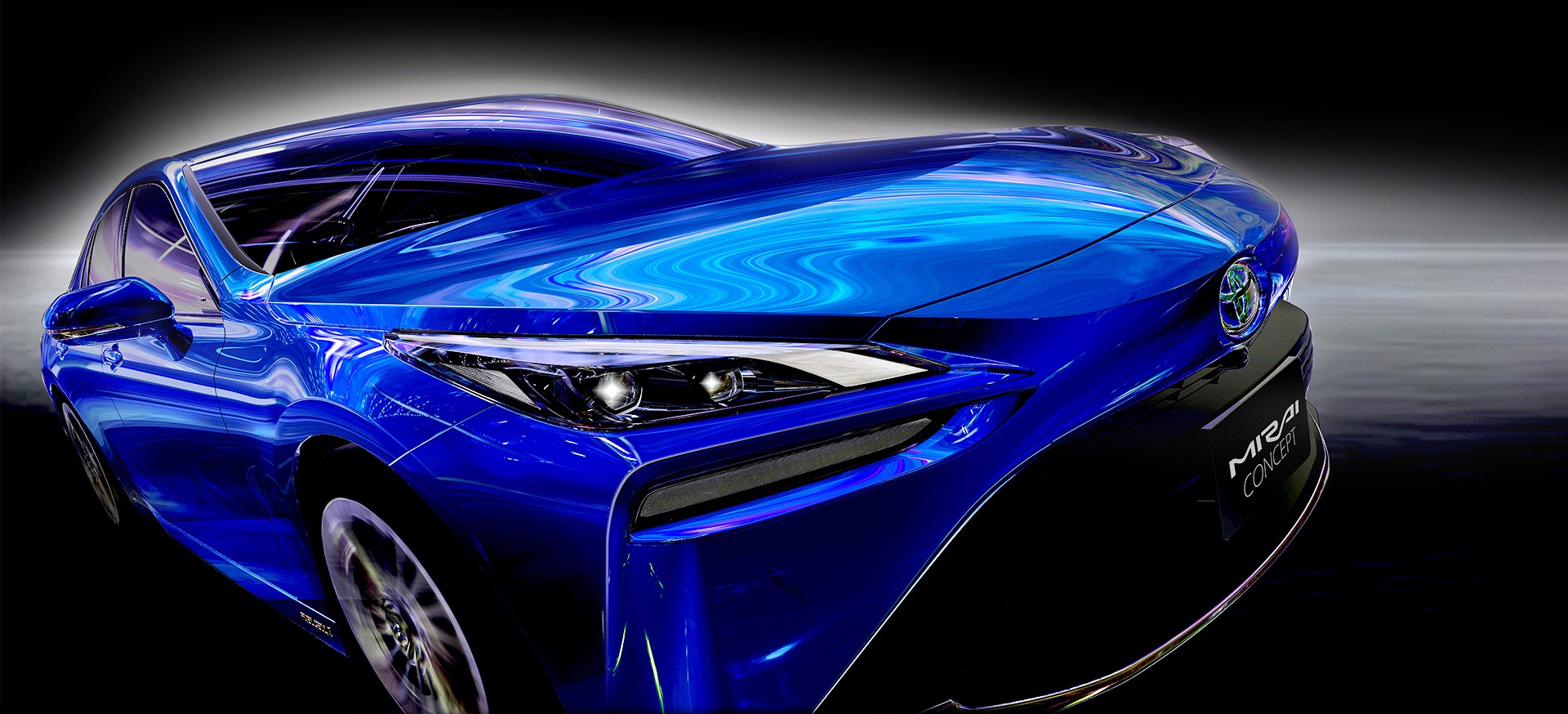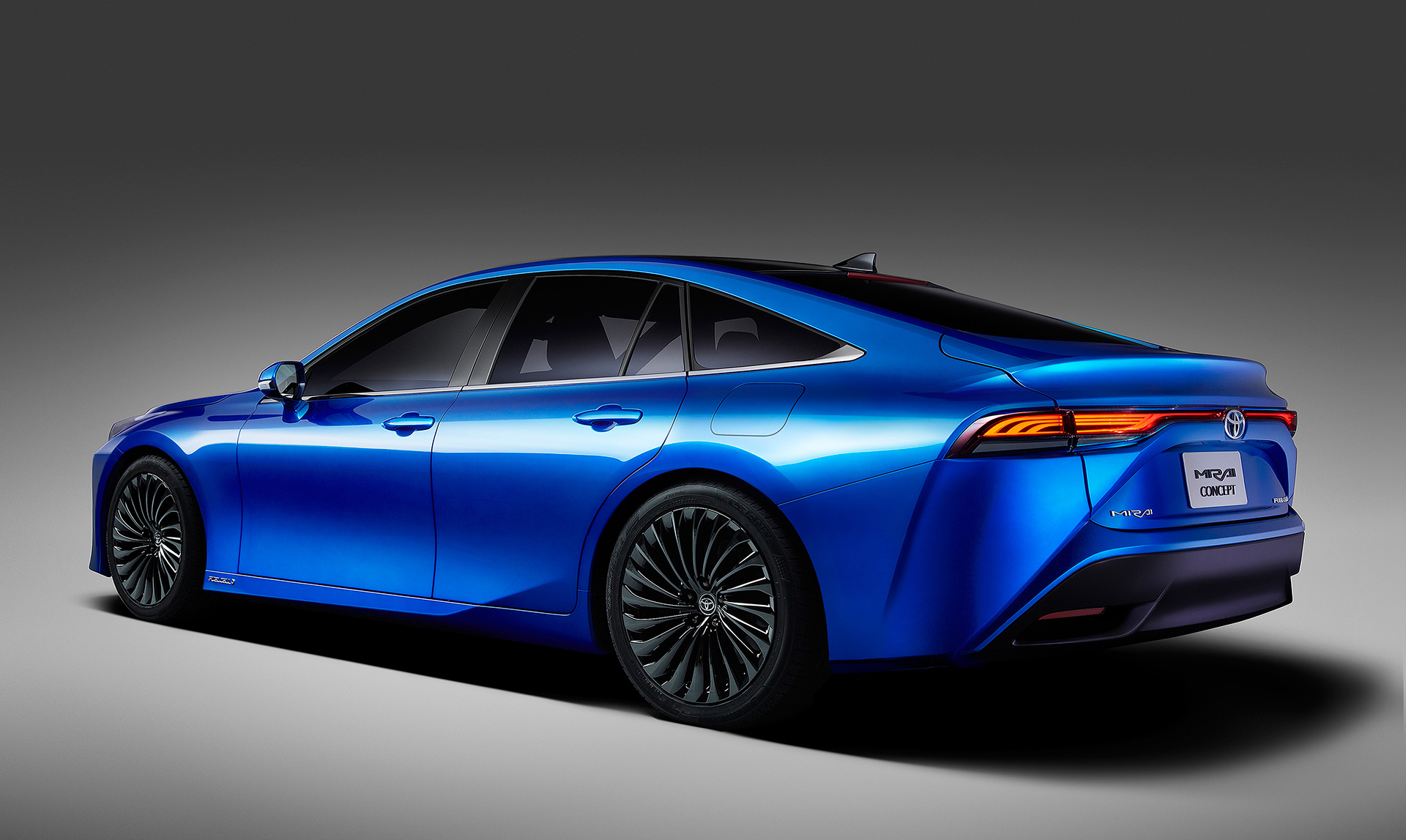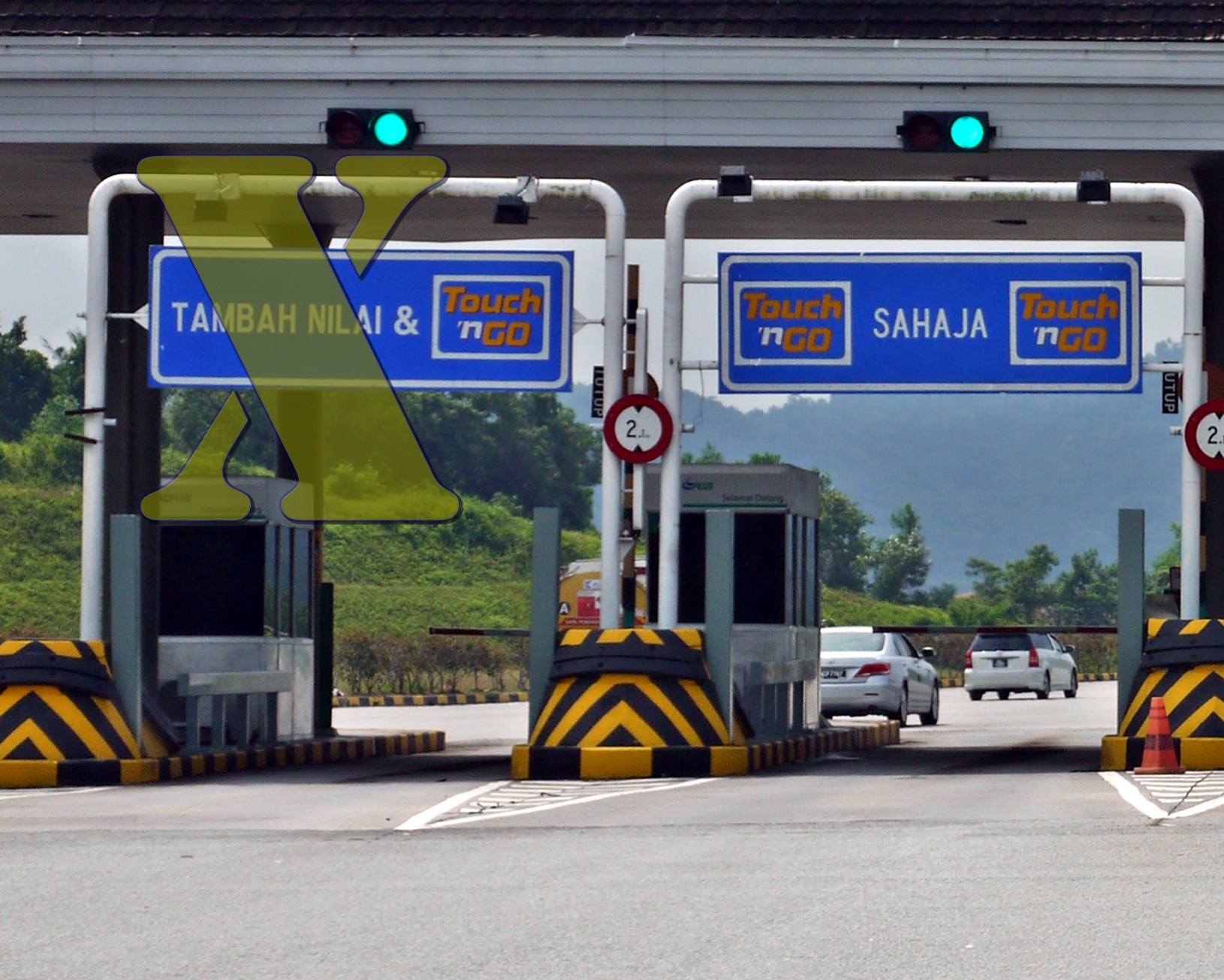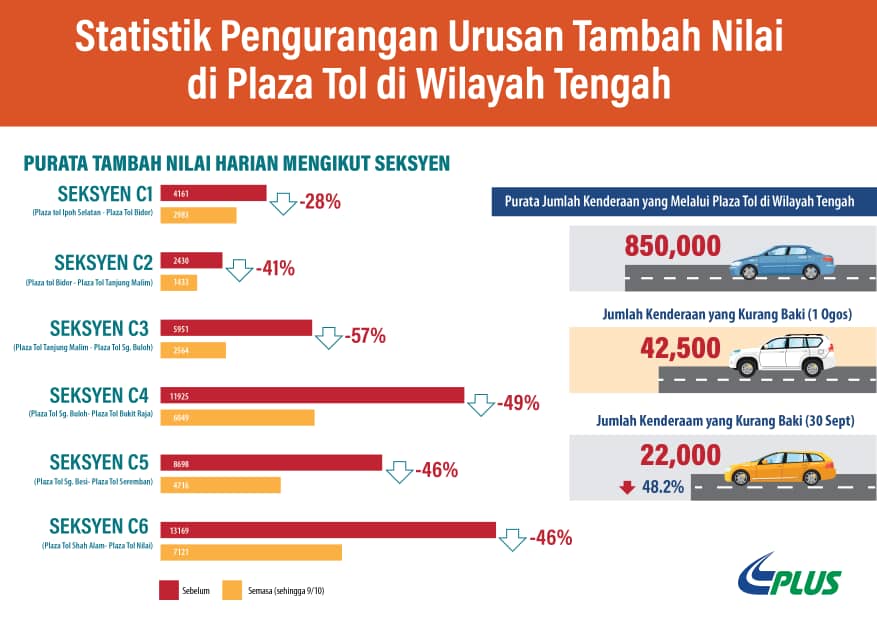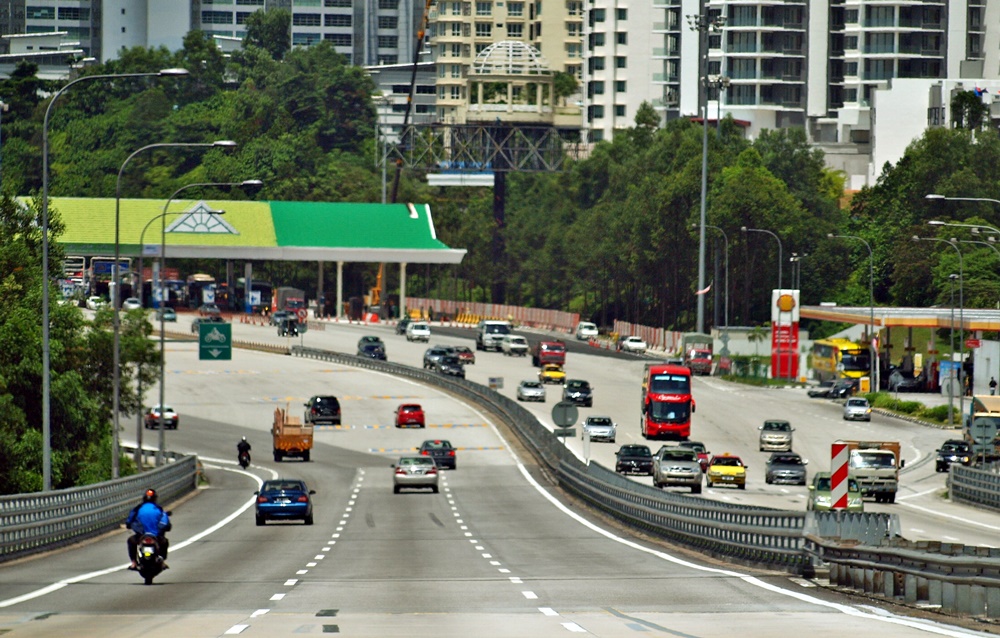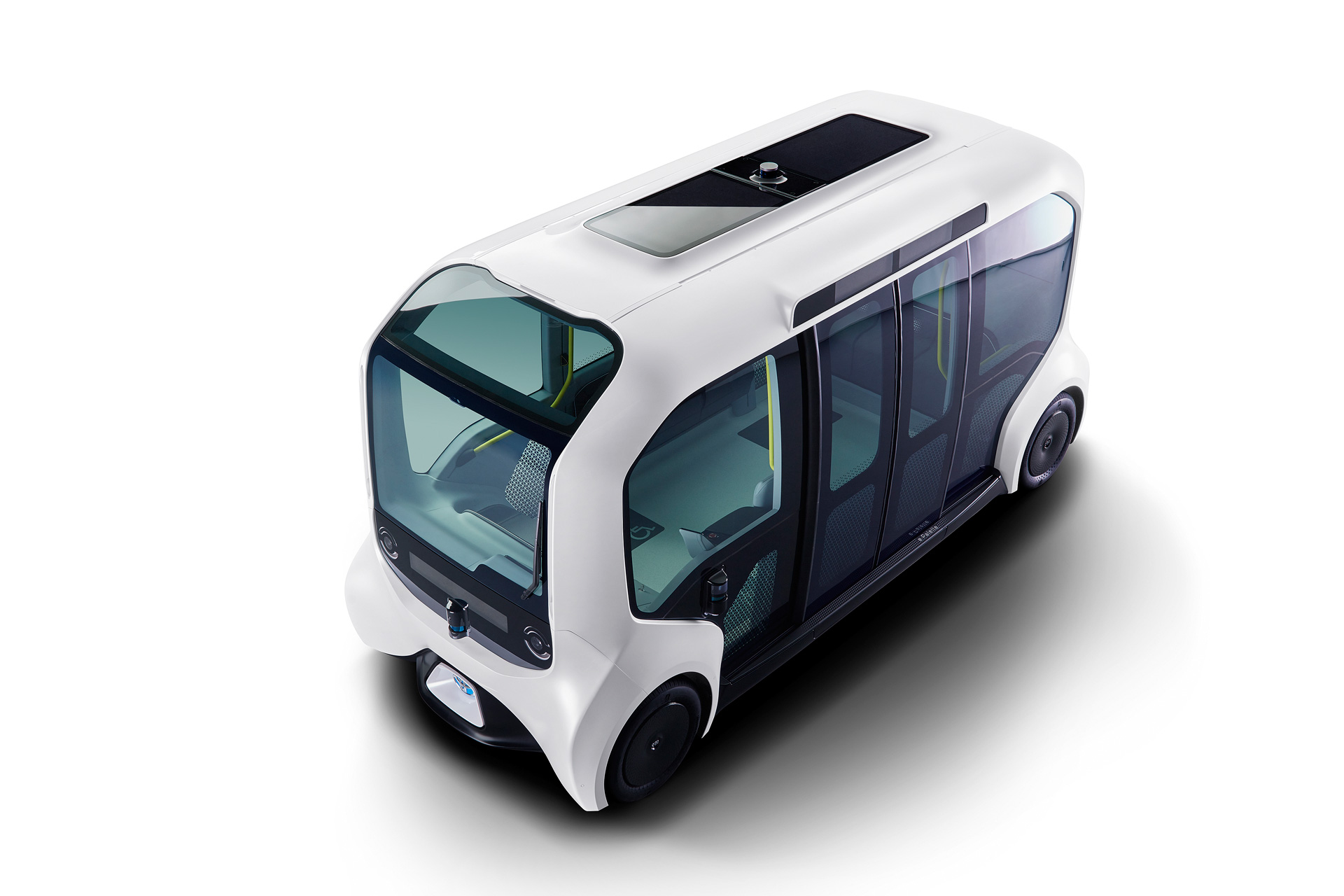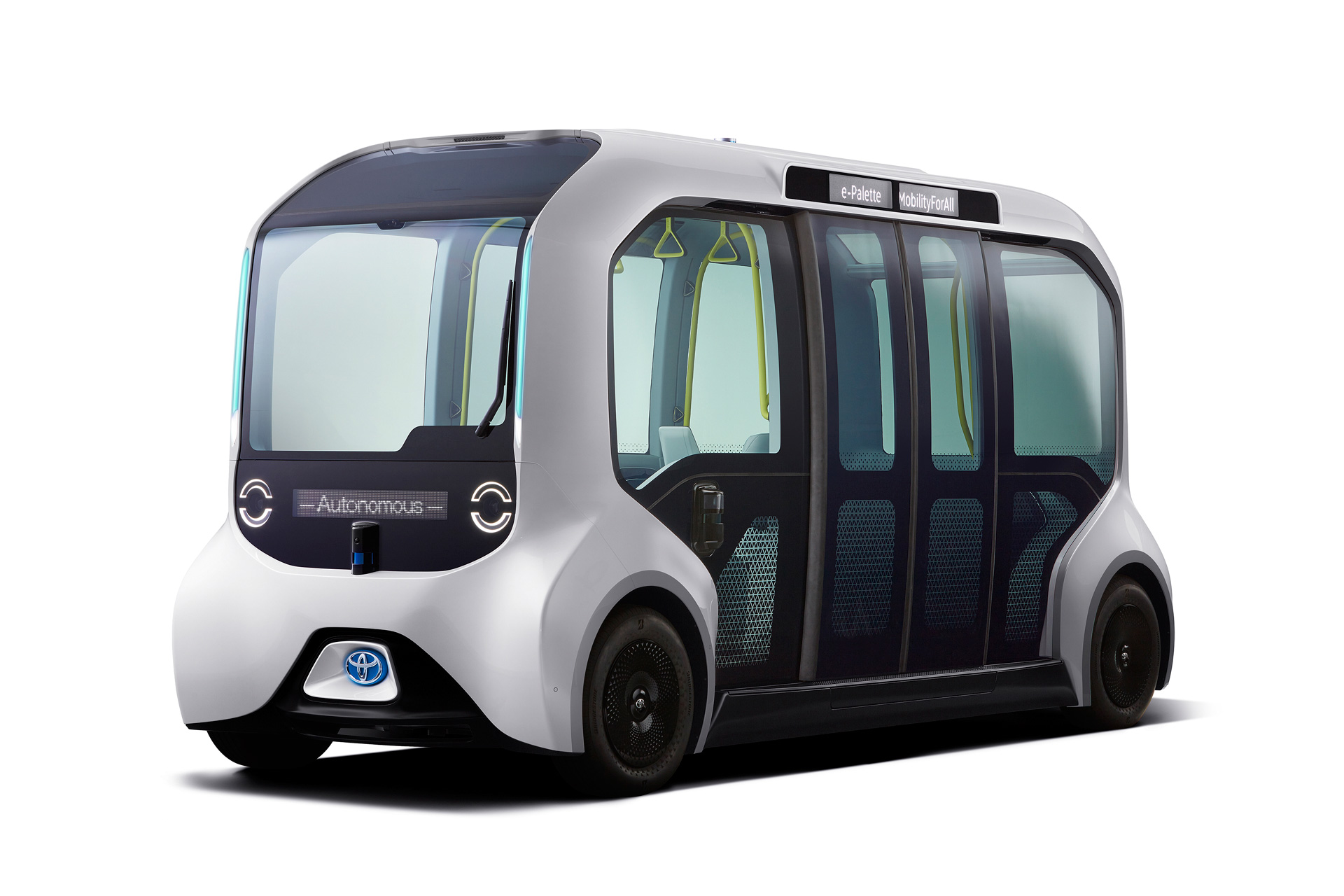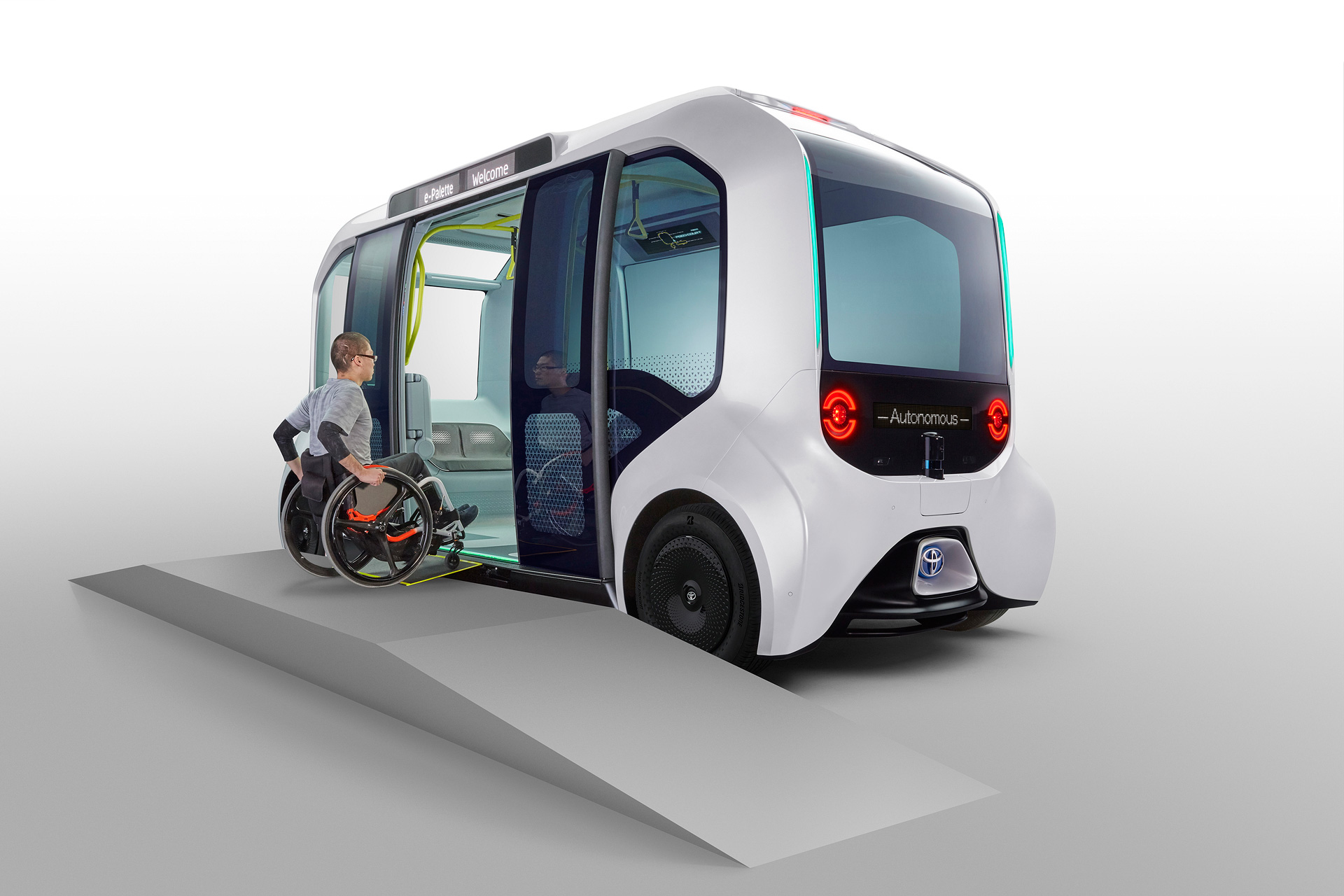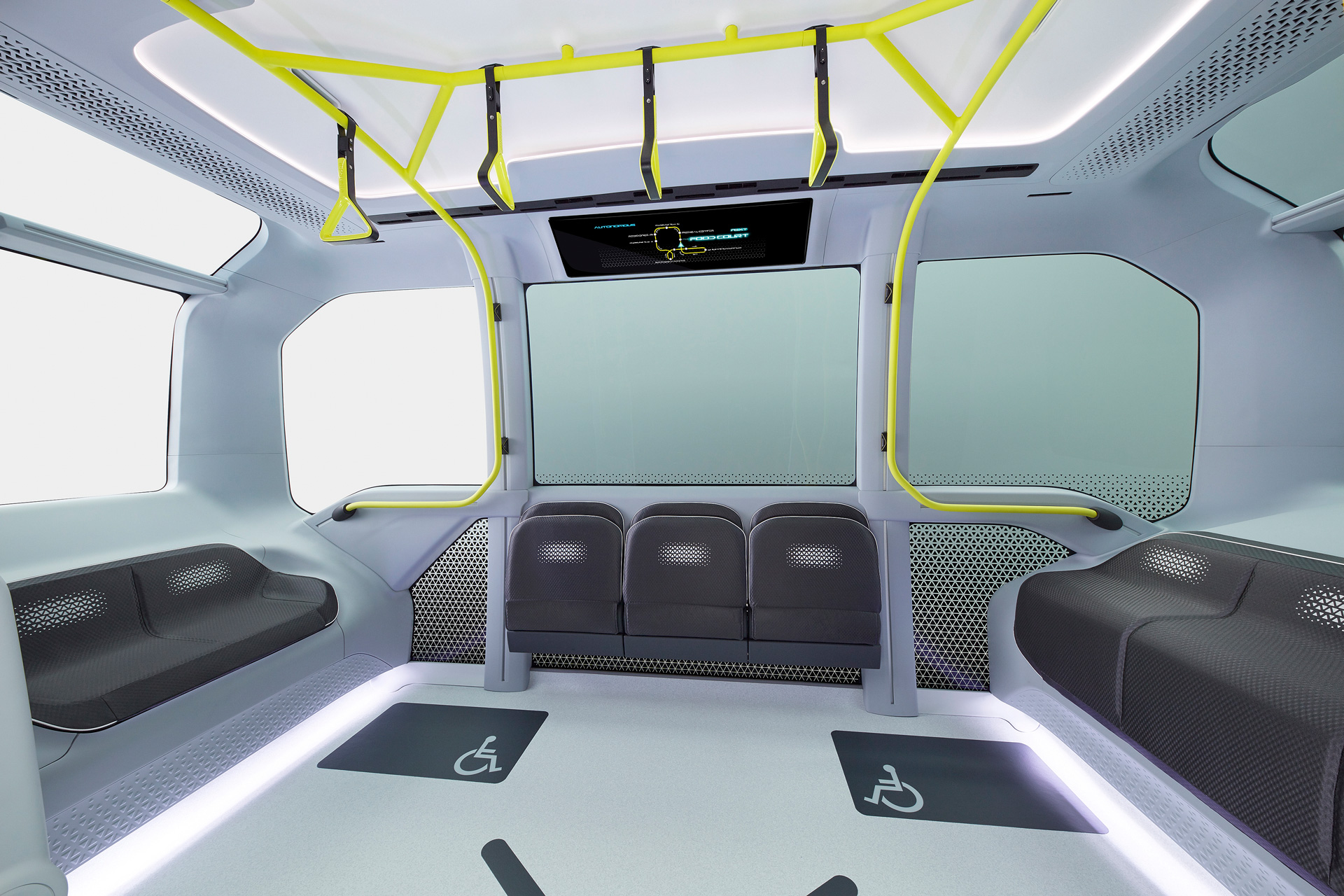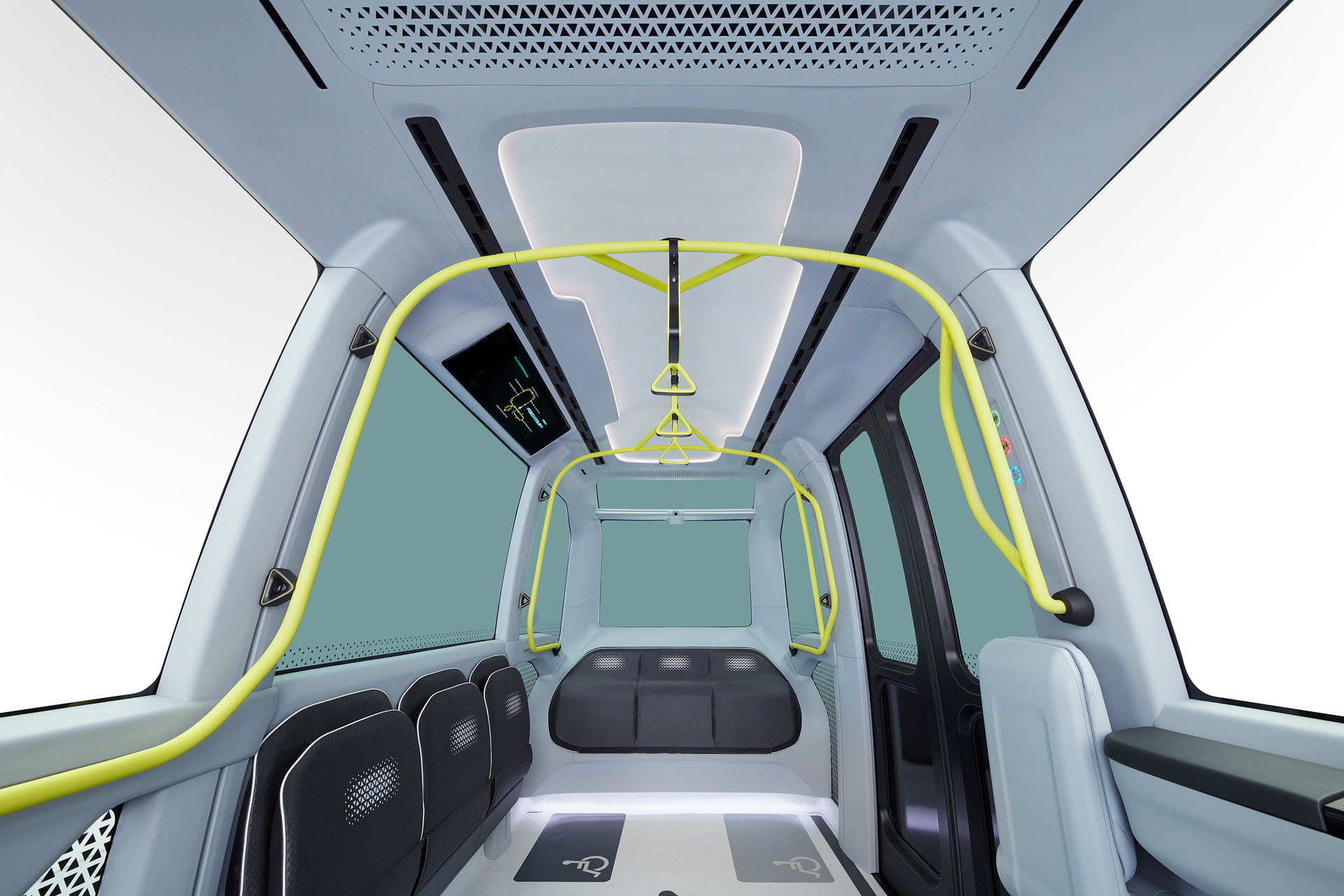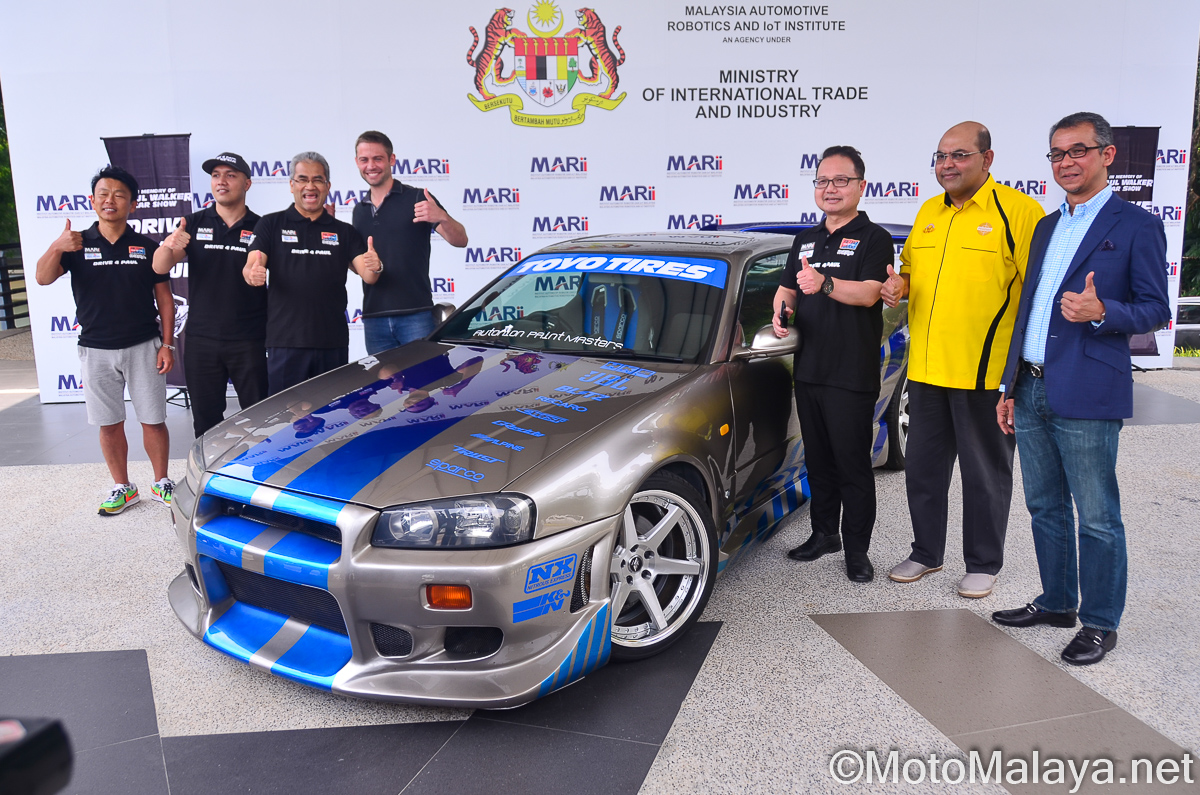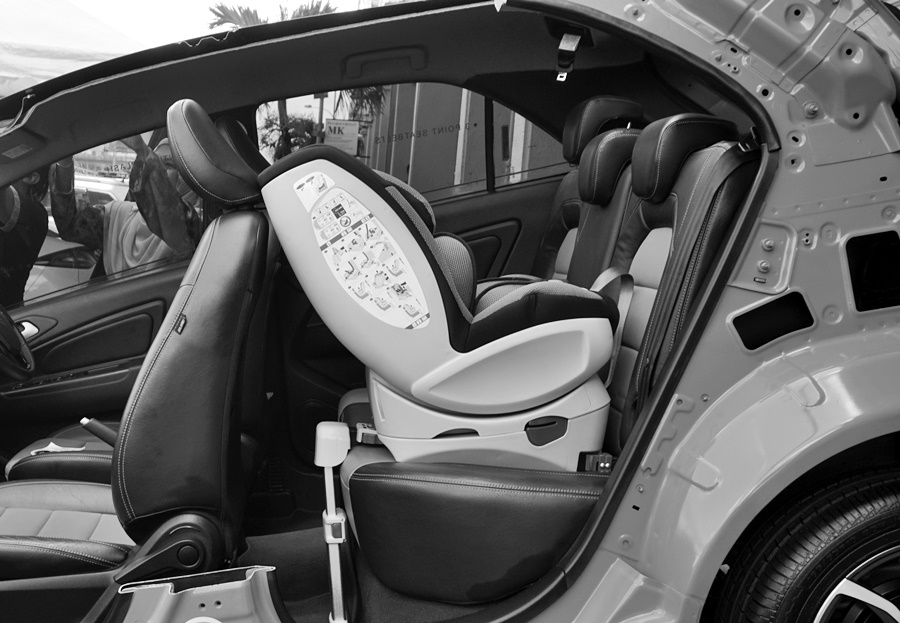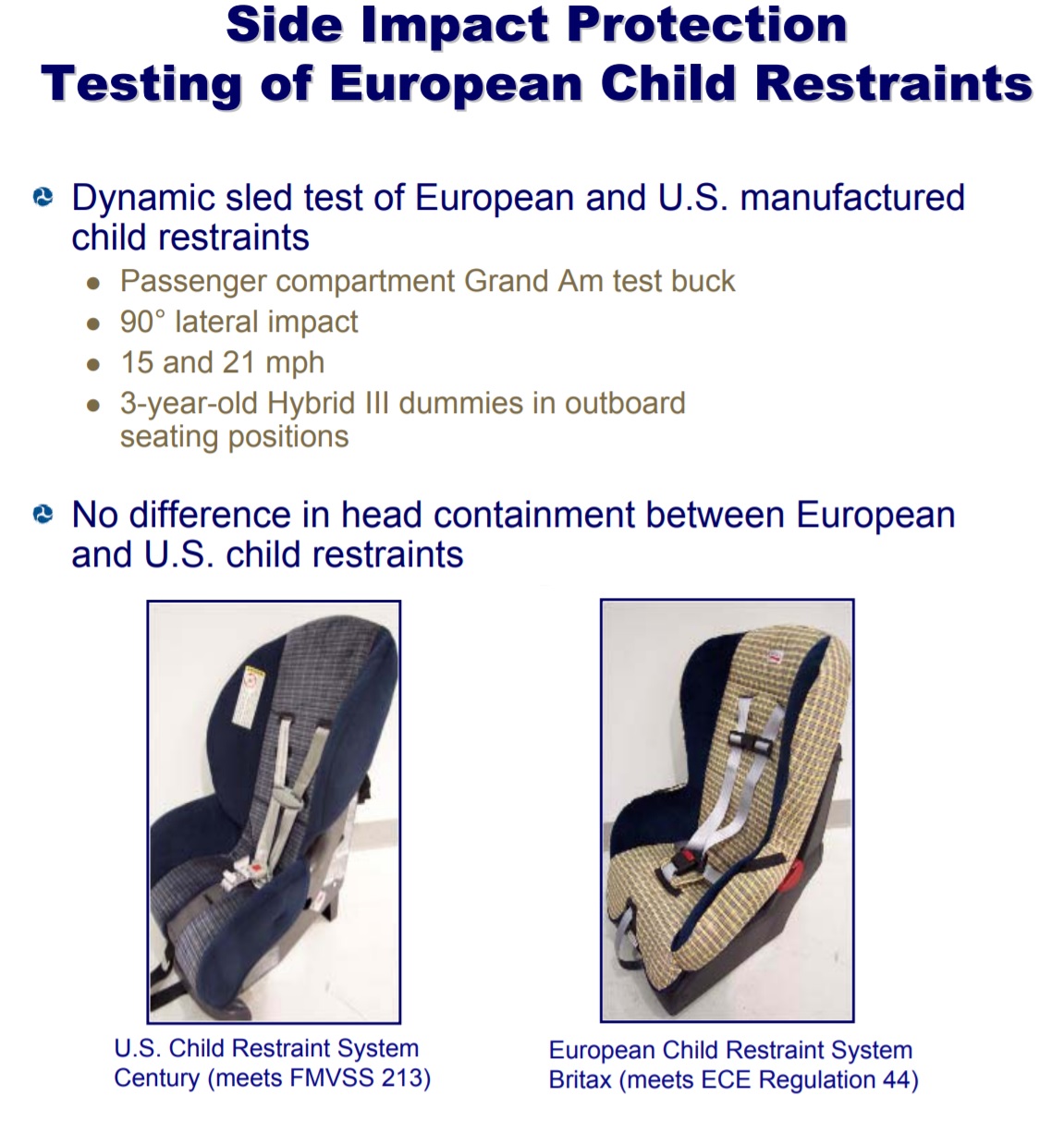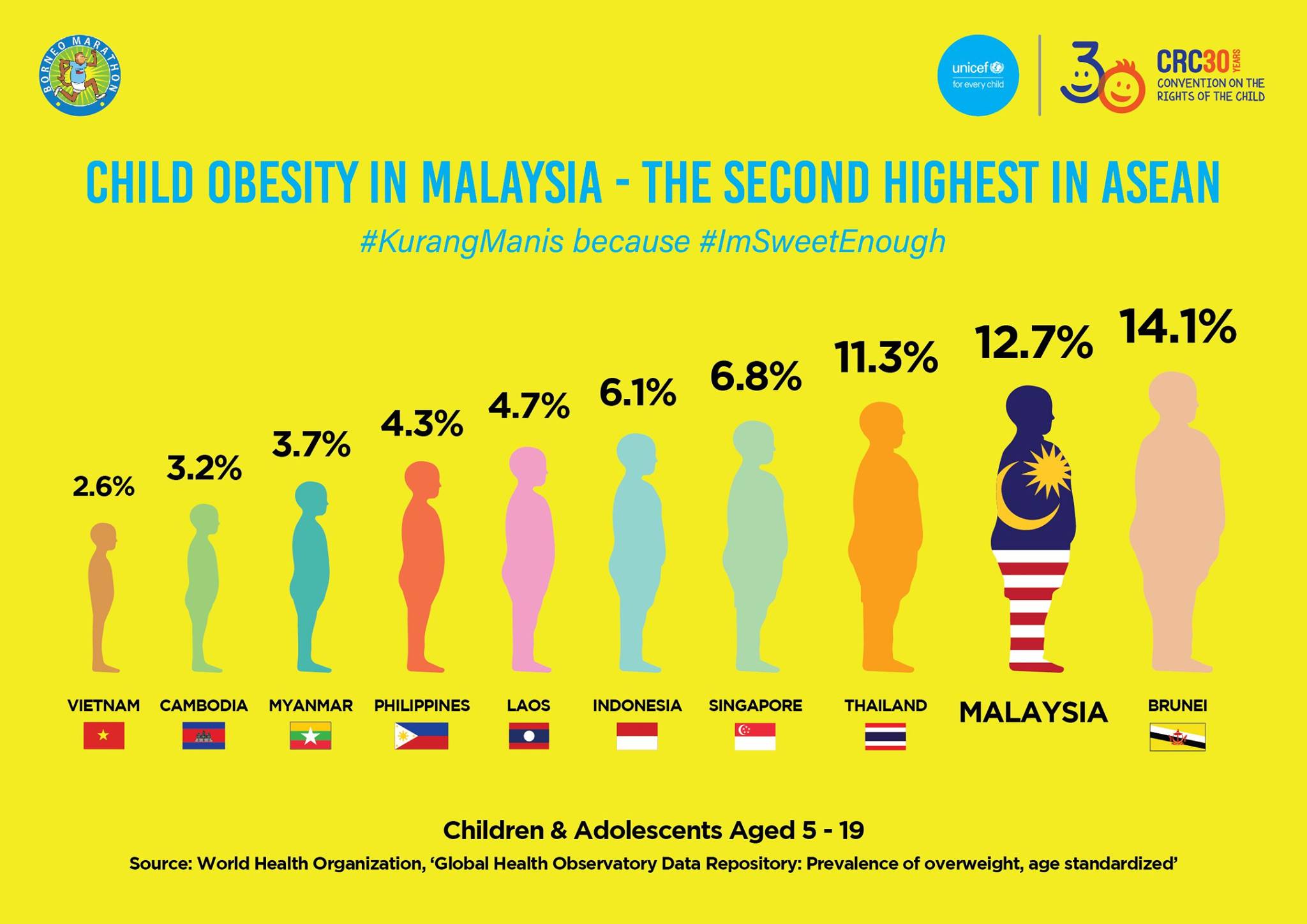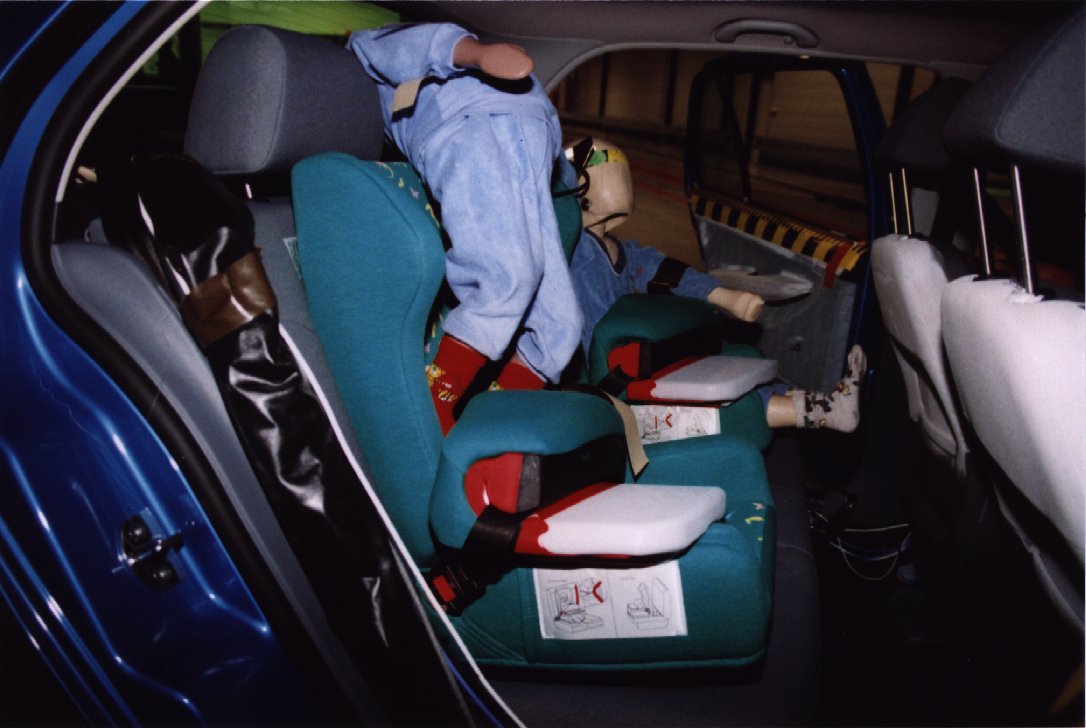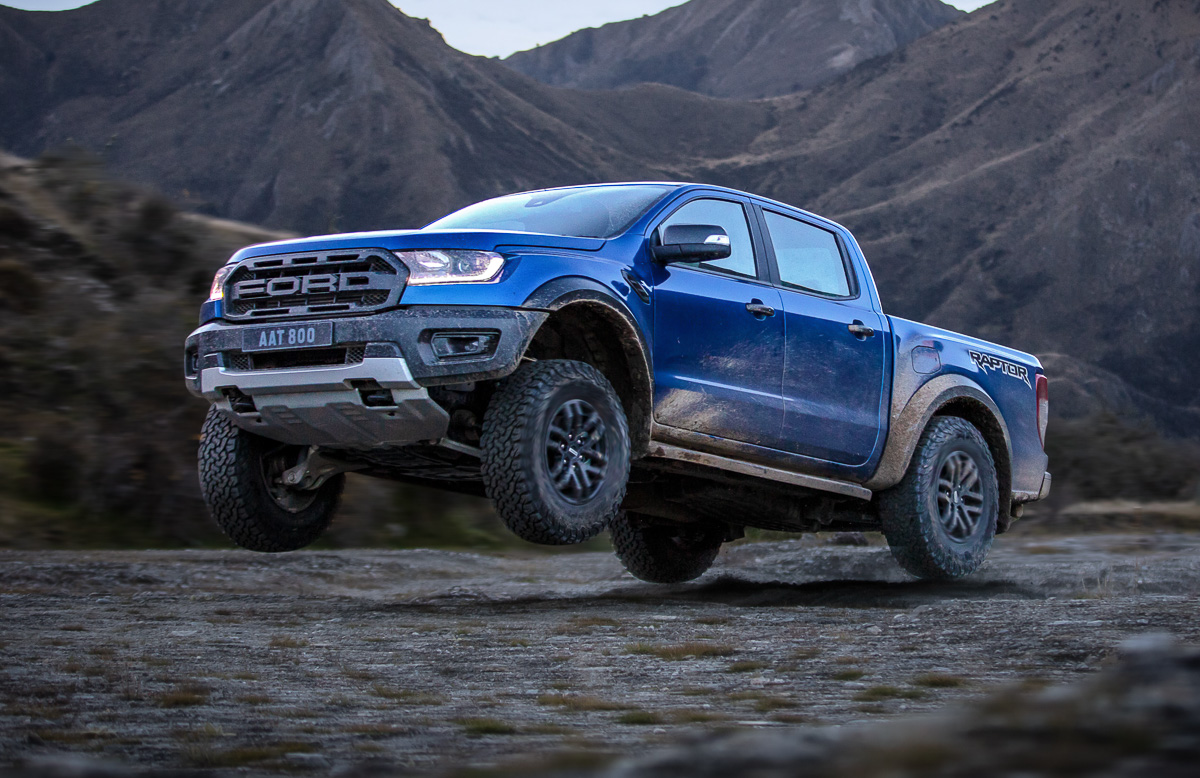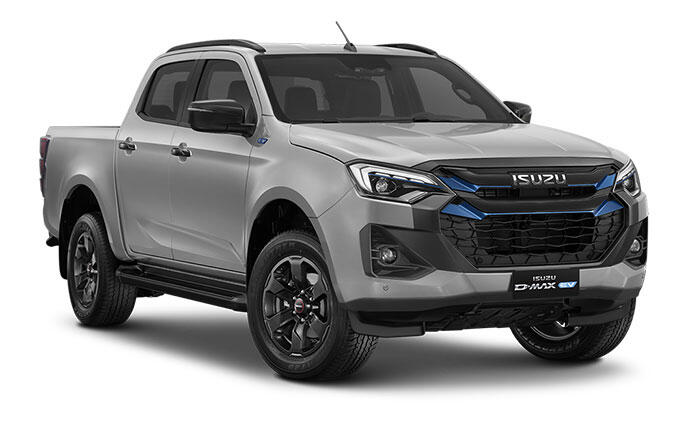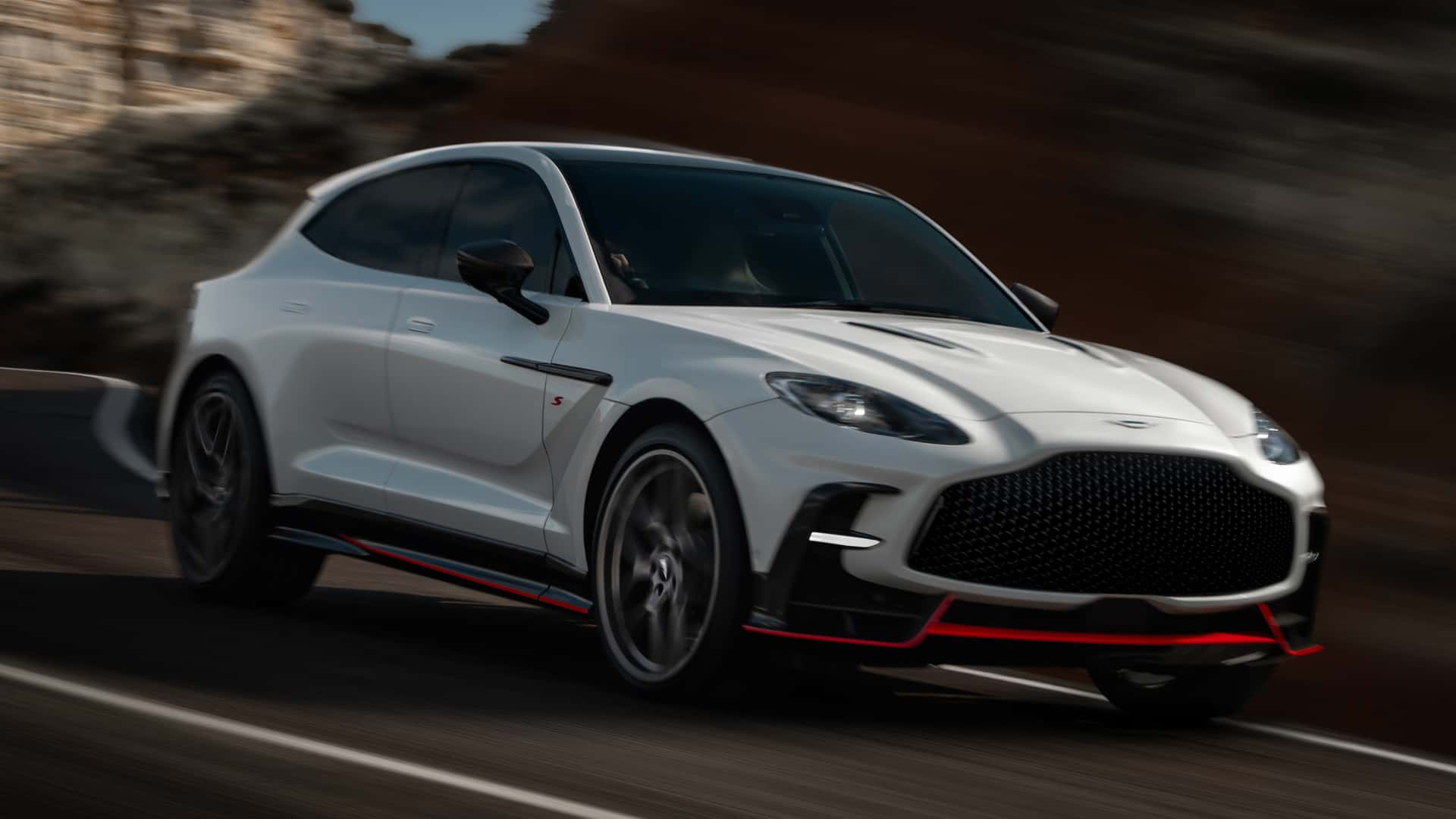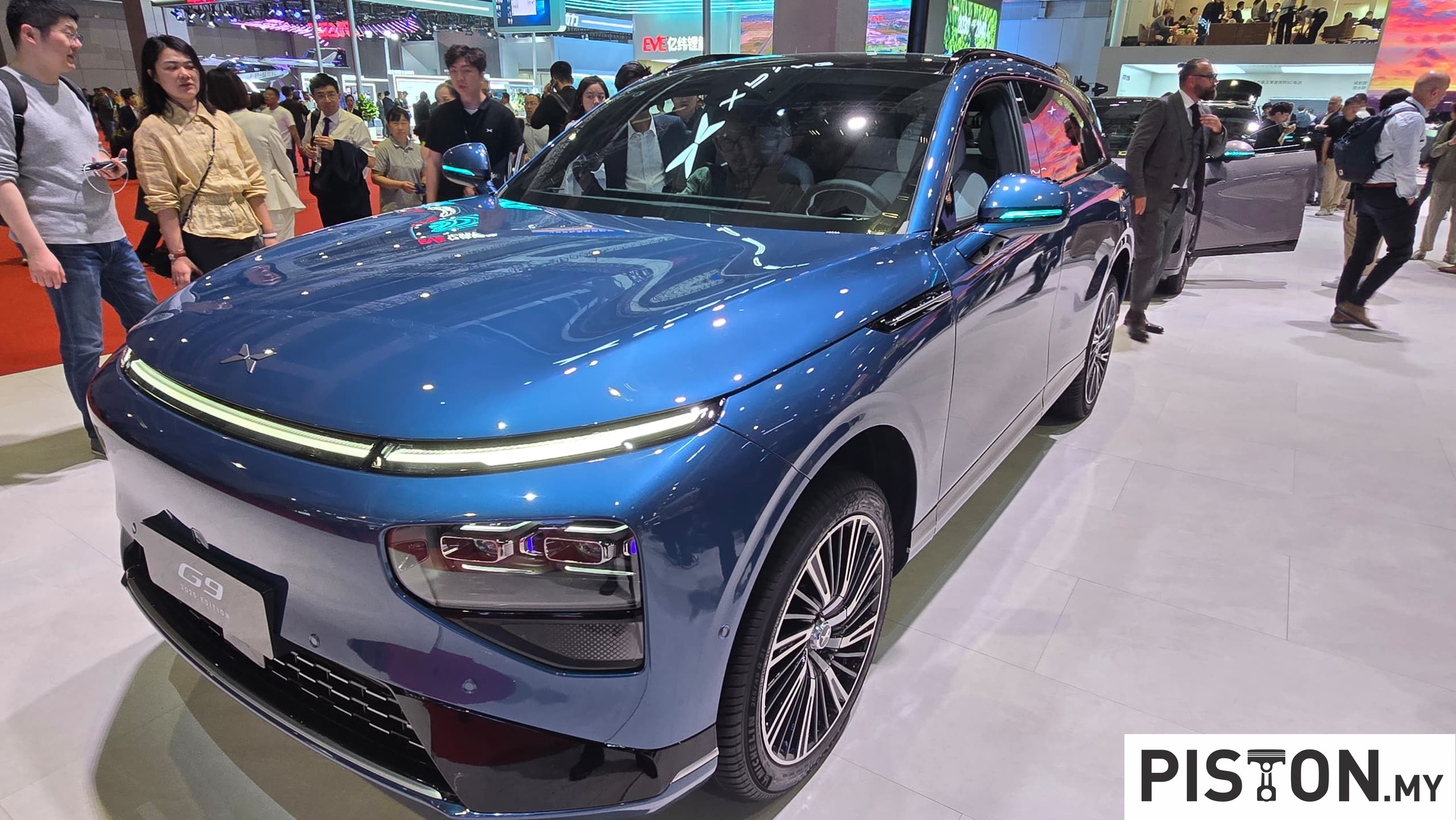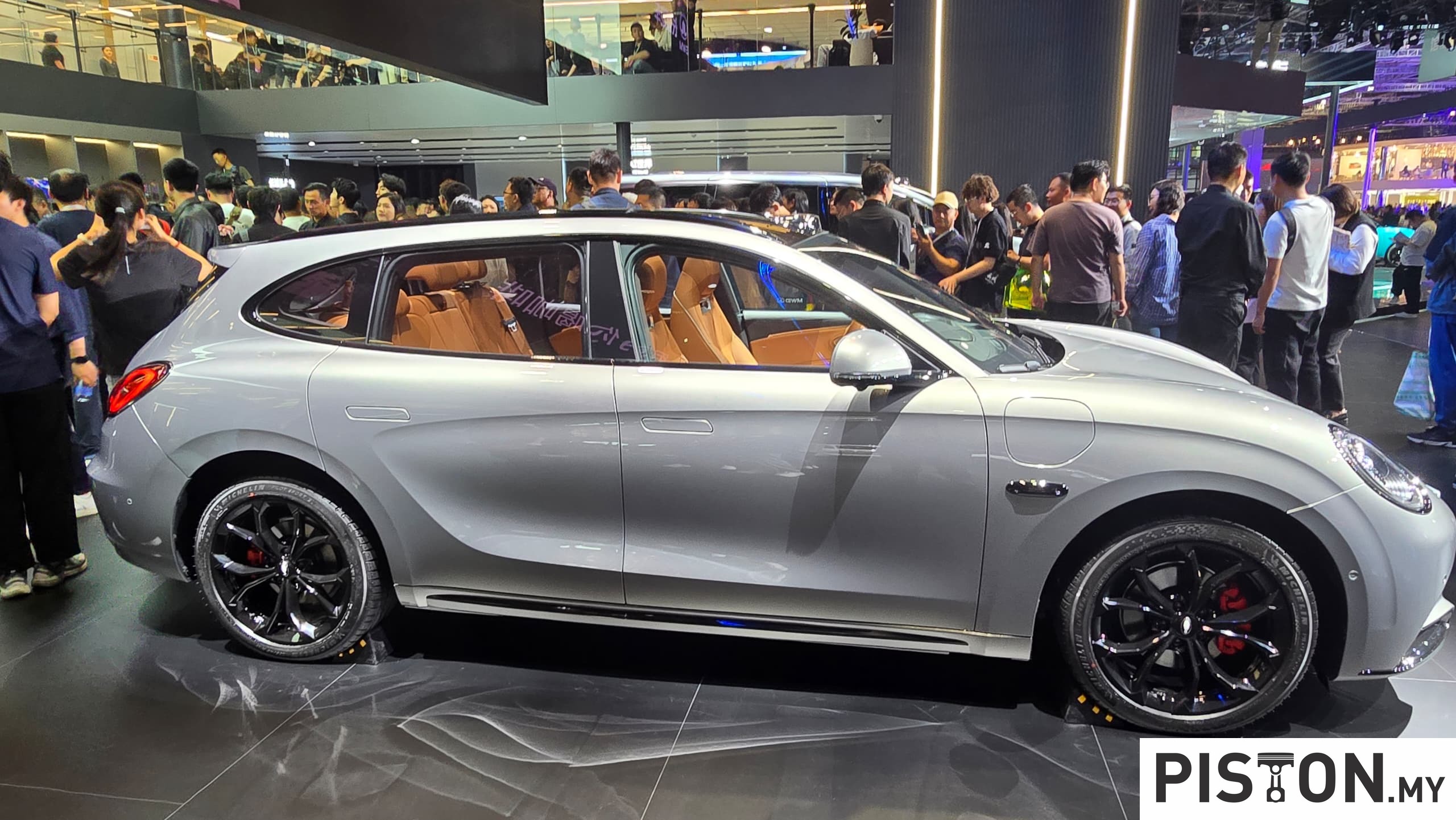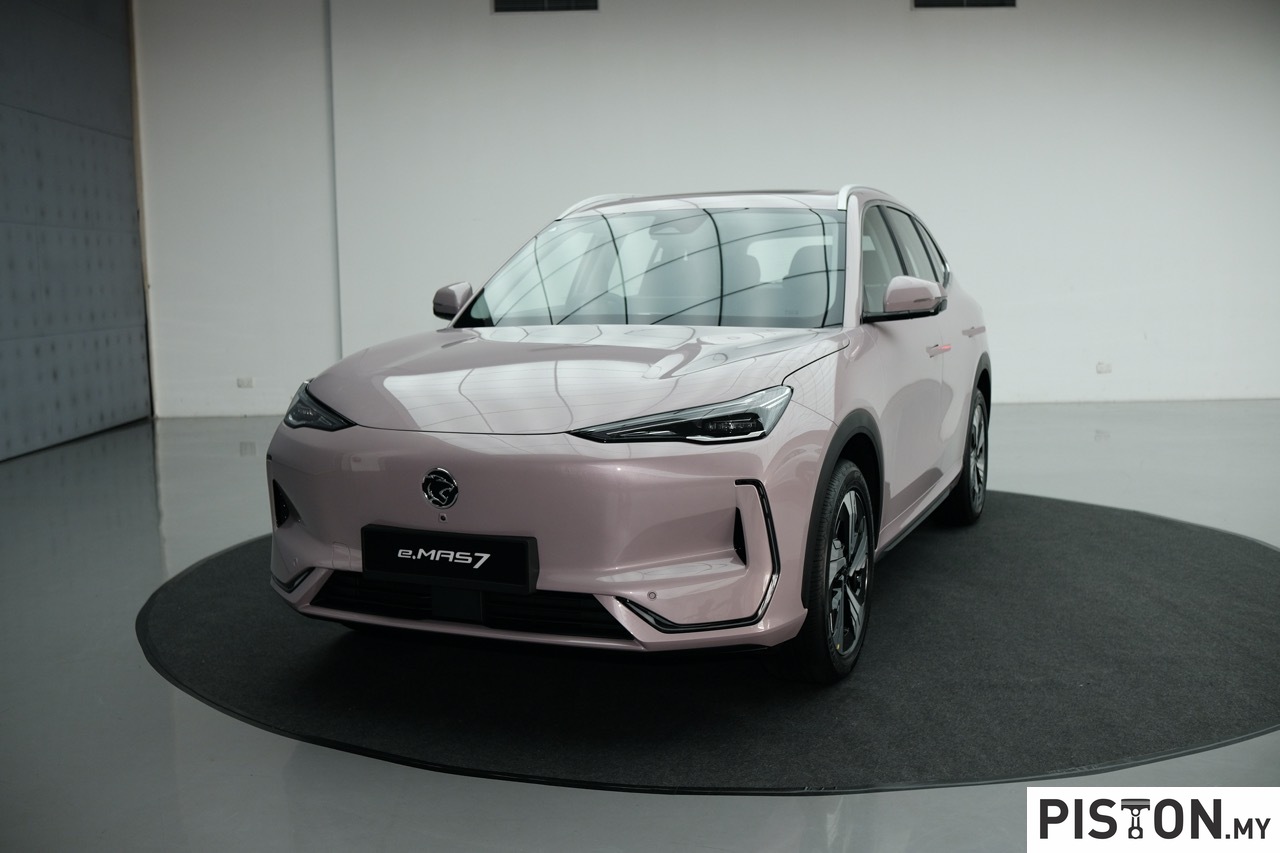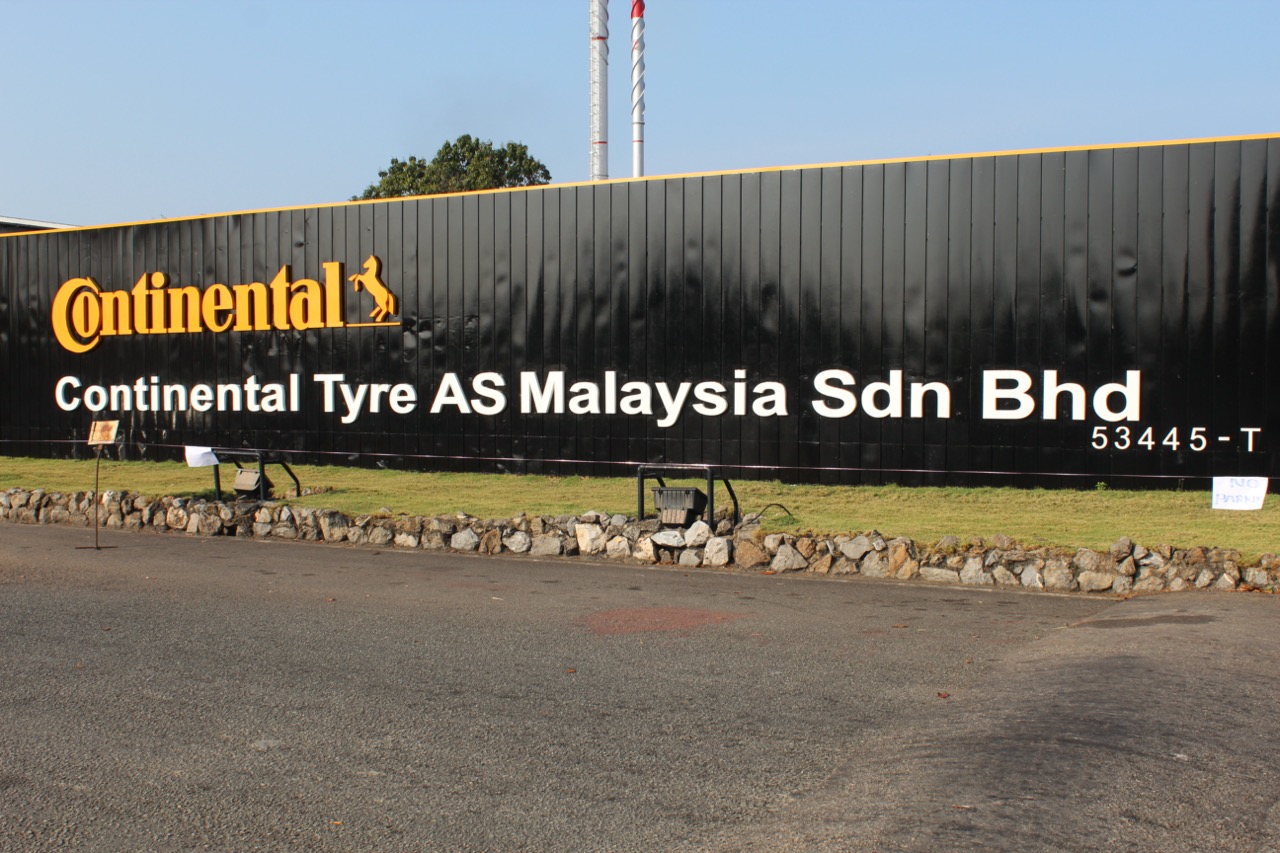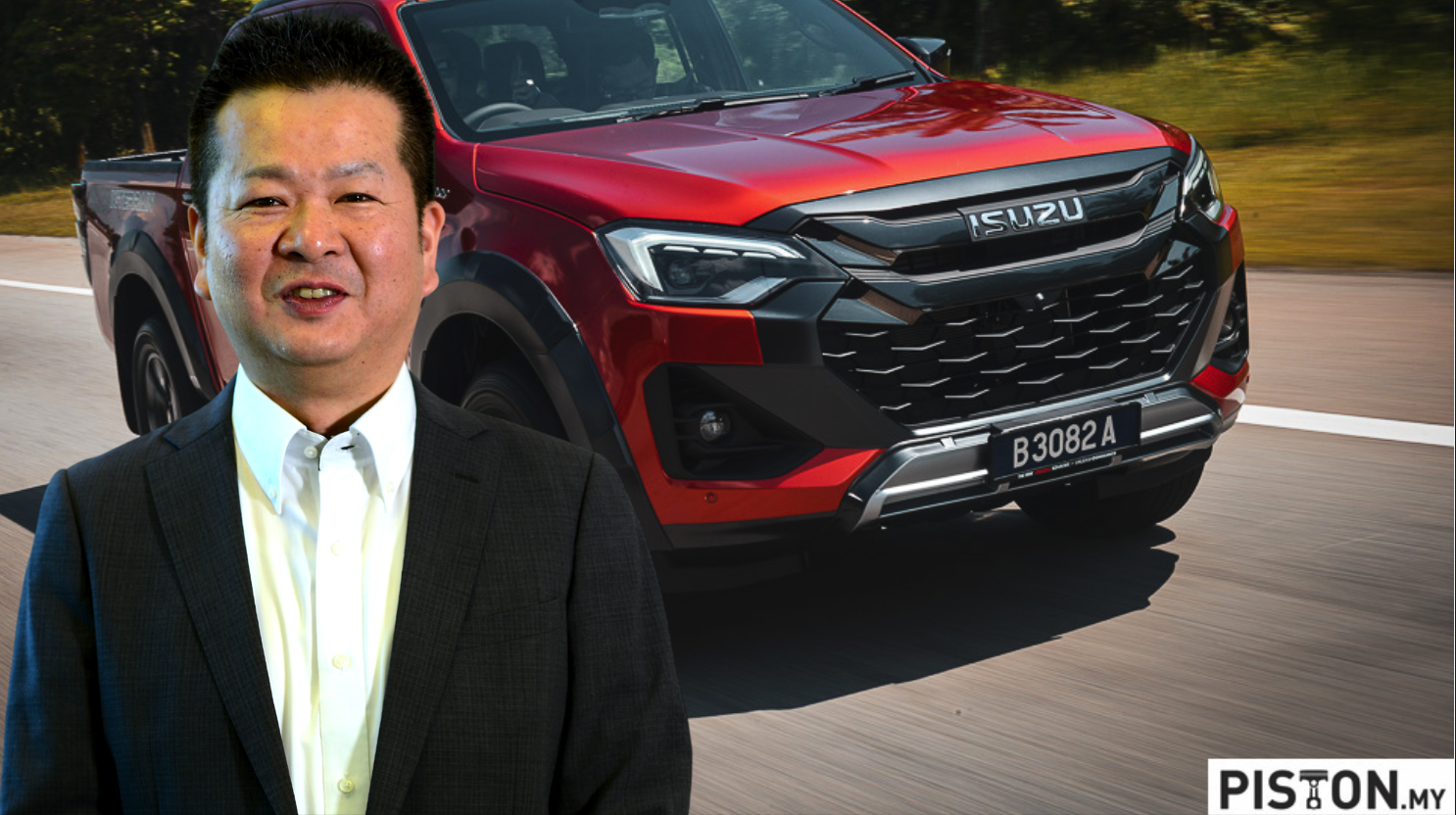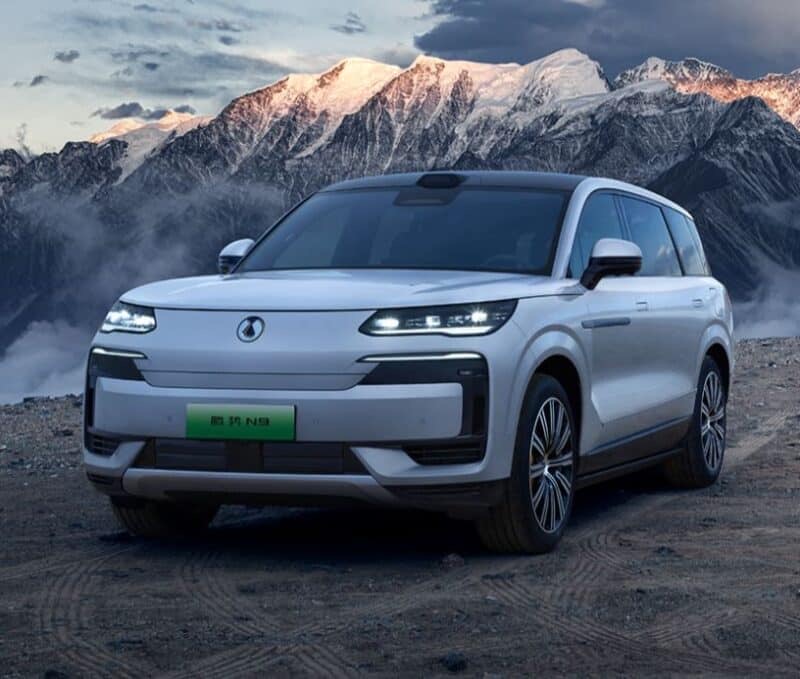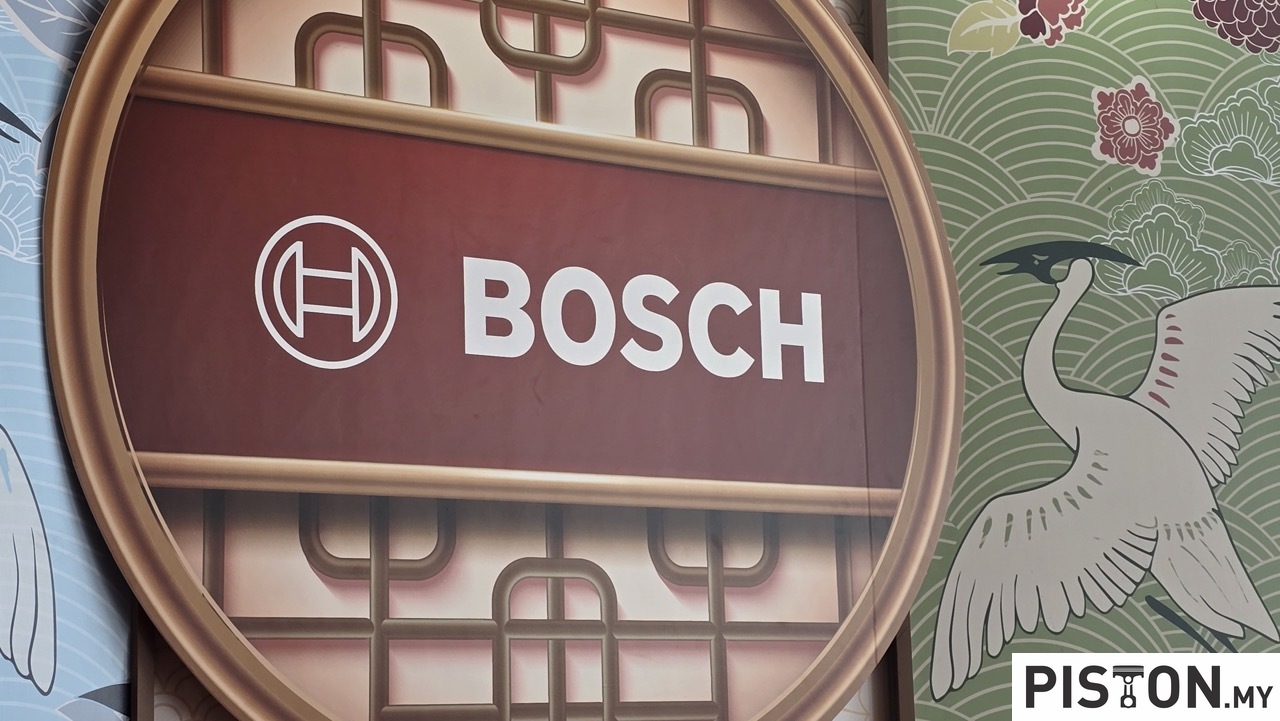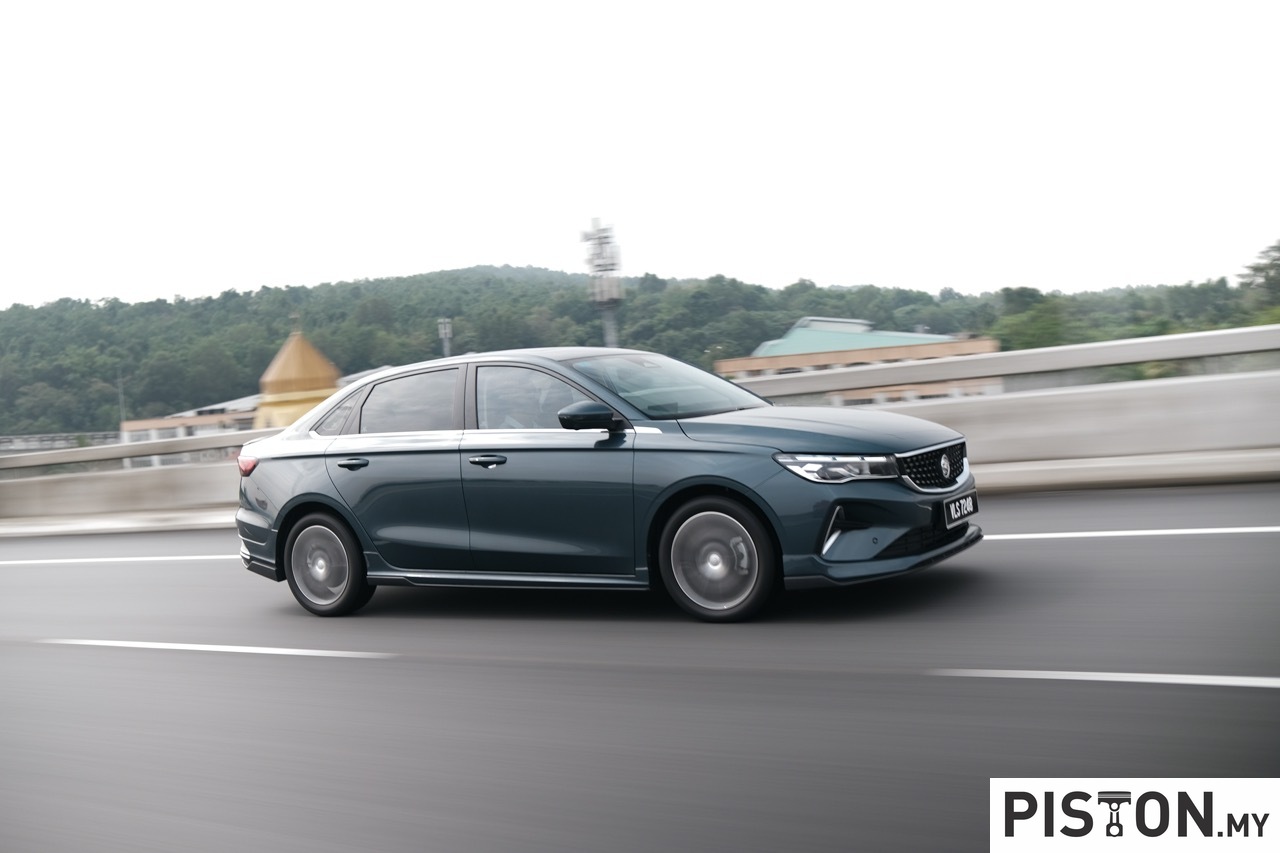Although the pace of sales for Toyota’s first fuel-cell electric vehicle (FCEV), the Mirai, has not been as fast as for the Prius, which was its first mass-produced hybrid model, the carmaker is pushing ahead with development of FCEVs. It is already in the final stage of development of the next generation of the Mirai and will display a concept model at the 2019 Tokyo Motor Show this month. It is expected that the production model will look very much like the concept shown in these pictures.
“We have worked to make a car that customers will want to drive all the time, a car that has an emotional and attractive design and the kind of dynamic and responsive performance that can bring a smile to the driver’s face,” said Yoshikazu Tanaka, Chief Engineer of the first generation Mirai as well as the second generation. “I want customers to say ‘I chose the Mirai because I simply wanted this car, and it just happens to be an FCEV.’ We will continue our development work focusing on that feeling, and we hope that with the new Mirai, we will be a leader in helping to realize a hydrogen energy society.”
Improved in all aspects
The totally re-designed Mirai reflects a major step forward for FCEVs and the potential of a hydrogen society, boasting significantly greater range, improved driving performance, and an elegant, sporty design that offers increased passenger room and comfort. It will be able to accommodate 5 occupants instead of four in the current Mirai.
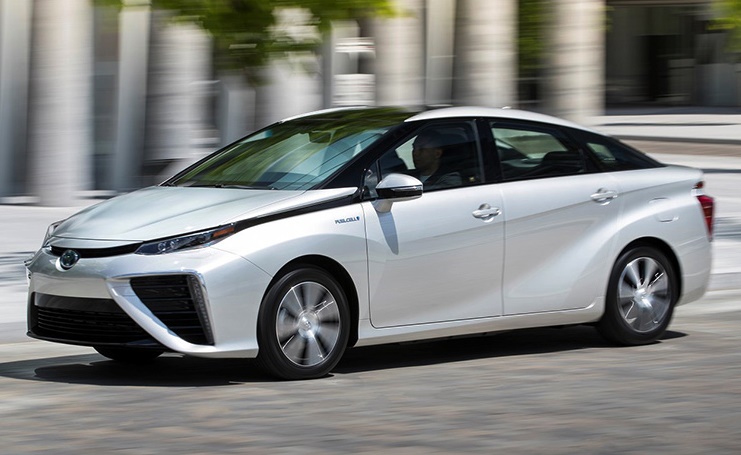
Launched in 2014, the first-generation of the FCEV proved the global potential of hydrogen to power clean and sustainable mobility, combining a driving range with refuelling time equivalent to conventional vehicles and no emissions but water. Since then, approximately 10,000 units have been sold globally, helping pave the way towards a hydrogen society that will reduce emissions, diversify energy sources, and generate global economic growth.
Scheduled for launch starting in late 2020, initially in Japan, North America and Europe, the second-generation Mirai is said to be much more than an eco-car, marking a new stage for FCEV technology. Improvements in fuel cell system performance and increased hydrogen storage capacity mean the new Mirai will target an increase in driving range.
The car has also been totally redesigned based on Toyota’s premium rear-wheel drive TNGA platform to combine greater agility and driving performance with a sleek and elegant exterior design. It will be presented in a newly developed exterior colour (called Force Blue Multiple Layers), that uses layers of colour to achieve exceptional brightness and depth.
Substantial improvements in driving performance
Engineered from the start to accommodate Toyota’s full range of powertrains, including hydrogen fuel cells, Toyota’s latest modular platform gives the Mirai Concept a higher degree of body rigidity, which contributes to greater agility and responsiveness, and a lower centre of gravity, which makes for nimble, rewarding handling.
Improvements to the fuel cell system go beyond increased range to offer linear, smooth response when pulling away, unity between the driver’s throttle inputs and the car’s acceleration. Handling is light and easy on winding roads, while highway driving produces an exceptional sense of power at all speeds.
Next stage of FCEV Technology
The fully-redesigned fuel cell system, including its fuel cell stack, will deliver substantially improved performance. This includes targeting a 30% increase in driving range over the current generation, thanks to increased hydrogen storage capacity, among other measures.
The Japanese government is promoting hydrogen as the fuel of the future for the country, with next year’s Olympics event serving as a starting point for the move. Its Ministry of Economy, Trade & Industry (METI) has set a target of 200,000 fuel cell vehicles on the road by 2025 and up to 800,000 by 2030. As with electrical recharging stations for hybrids, there will need to be a substantial network of hydrogen filling stations throughout the country and METI has set target of 900.




